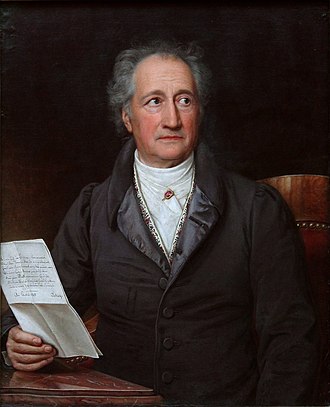by Scott Mehl © Unofficial Royalty 2021
Grand Duchy of Saxe-Weimar-Eisenach: The Duchy of Saxe-Weimar-Eisenach was created in 1809 when the Duchy of Saxe-Eisenach and the Duchy of Saxe-Weimar merged. The Congress of Vienna elevated Saxe-Weimar-Eisenach to a Grand Duchy in 1815. As the German Empire was crumbling at the end of World War I, Wilhelm Ernst, the last Grand Duke of Saxe-Weimar-Eisenach, was forced to abdicate on November 9, 1918. He was stripped of his throne and his properties and forced into exile. With his family, he took up residence at Schloss Heinrichau, the family’s estate in Heinrichau, Silesia, now Henryków, Poland. Today, the territory that encompassed the Grand Duchy of Saxe-Weimar-Eisenach is located in the German state of Thuringia.
********************

Karl August, Grand Duke of Saxe-Weimar-Eisenach source: Wikipedia
Karl August was the first Grand Duke of Saxe-Weimar-Eisenach, reigning from 1815 until 1828. He was born in Weimar, Duchy of Saxe-Weimar, now in Thuringia, Germany on September 3, 1757, the eldest son of Ernst August II, Duke of Saxe-Weimar and Anna Amalia of Brunswick-Wolfenbüttel. He had one younger sibling:
- Friedrich Ferdinand (1758-1793) – unmarried
When his father died in May 1758, Karl August became Duke of Saxe-Weimar and Duke of Saxe-Eisenach at just nine months old. His mother served as regent and is recognized for having built up the resources and strength of the duchies during her son’s youth. Meanwhile, Karl August was educated privately by several tutors and then made a grand tour of Europe along with his younger brother. On this trip, he met the great German writer Johann Wolfgang von Goethe, who would become a close friend, confidante, and advisor.

Luise of Hesse-Darmstadt. source: Wikipedia
Shortly after reaching his majority and taking control of the government of the two duchies, Karl August married Luise of Hesse-Darmstadt in Karlsruhe, Margraviate of Baden, now in the German state of Baden-Württemberg, on October 3, 1775. Luise was the daughter of Ludwig IX, Landgrave of Hesse-Darmstadt and Caroline of Zweibrücken. They had seven children:
- Princess Luise Auguste (1779-1784) – died in childhood
- stillborn daughter (1781)
- Grand Duke Karl Friedrich (1783-1853) – married Grand Duchess Maria Pavlovna of Russia, had issue
- stillborn son (1785)
- Princess Karoline Luise (1786-1816) – married Hereditary Prince Friedrich Ludwig of Mecklenburg-Schwerin, had issue
- stillborn son (1789)
- Prince Bernhard (1792-1862) – married Princess Ida of Saxe-Meiningen, had issue

Karl August’s surviving children – Bernhard, Karoline Luise, and Karl Friedrich. source: Wikipedia
One of his first official acts was appointing the great German writer Johann Wolfgang von Goethe to his privy council. It is perhaps through Goethe’s influence and support that Karl August worked to promote education and the arts. He established the Weimar Princely Free Drawing School in 1776 and was instrumental in reforming the education system and promoting the University of Jena.

Johann Wolfgang von Goethe. source: Wikipedia
A firm supporter of a unified Germany, Karl August was one of the leading forces behind the establishment of the League of Princes in 1785. Two years later, he was offered the Hungarian crown but refused. He served with the Prussian Army as a major-general and led his regiment into several battles in 1792. After the disastrous Battle of Jena in 1806, Karl August was forced to join Napoleon’s Confederation of the Rhine to avoid losing his territories.
In 1809, the two duchies were united, and Karl August became Duke of Saxe-Weimar-Eisenach. Six years later, following the Congress of Vienna, Saxe-Weimar-Eisenach was elevated to a Grand Duchy with Karl August as its first Grand Duke. Much more liberal than many of his contemporaries, Karl August was the first German prince to grant a liberal constitution and to promote the freedom of the press.
Grand Duke Karl August died at Castle Graditz in Graditz, Kingdom of Prussia, now in Saxony, Germany, on June 14, 1828, and is buried in the Weimarer Fürstengruft in the Historical Cemetery in Weimar, Grand Duchy of Saxe-Weimar-Eisenach, now in Thuringia, Germany.
This article is the intellectual property of Unofficial Royalty and is NOT TO BE COPIED, EDITED, OR POSTED IN ANY FORM ON ANOTHER WEBSITE under any circumstances. It is permissible to use a link that directs to Unofficial Royalty.
Saxe-Weimar-Eisenach Resources at Unofficial Royalty

